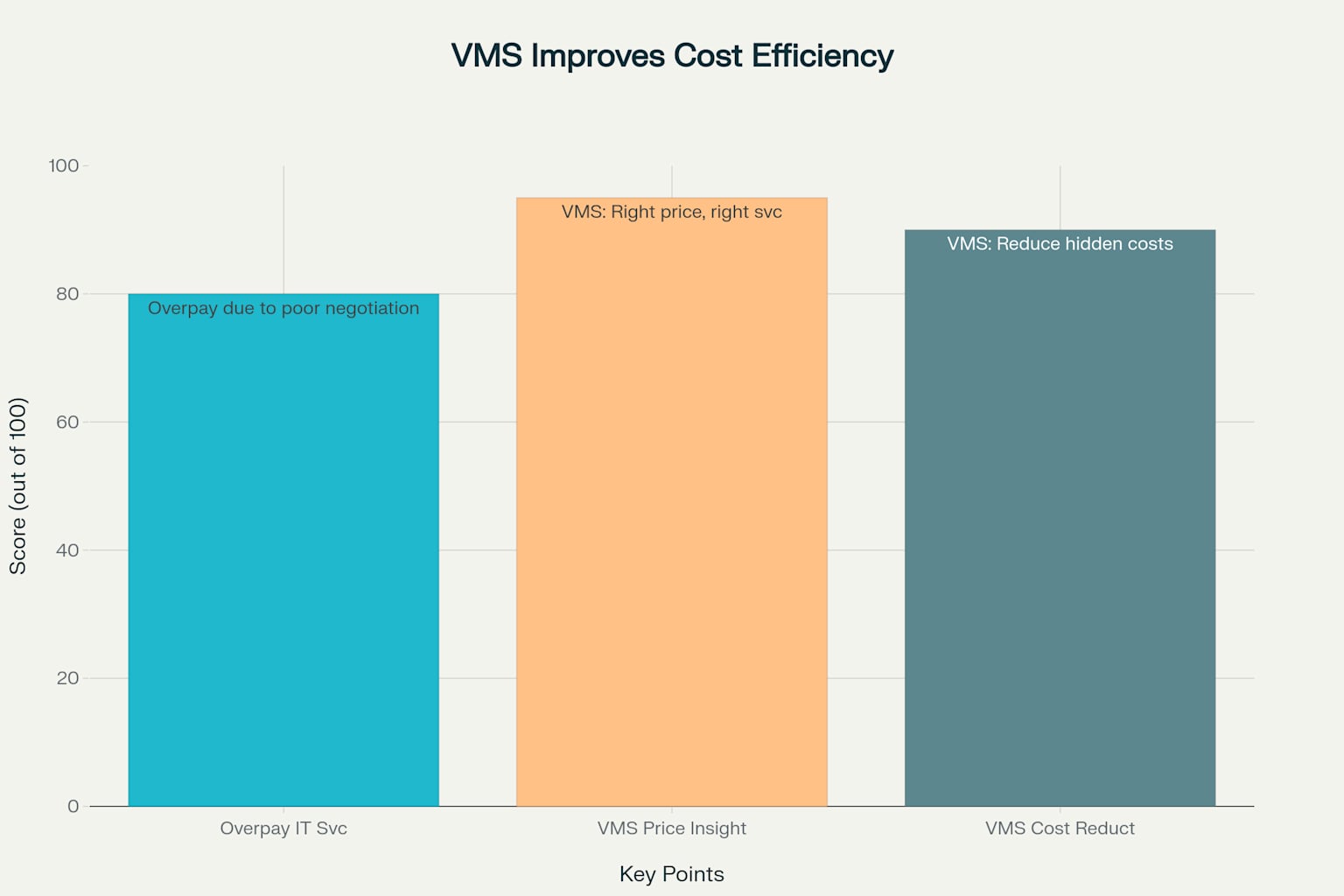The Role of Vendor Management Systems (VMS)
Introduction
Organizations often overpay for IT services due to ineffective negotiation, limited market knowledge, and poor contract management. Vendor Management System (VMS) firms offer a strategic solution, leveraging market insights, regional pricing data, and robust contract structuring to ensure businesses pay the right price for the right service. Additionally, VMS platforms help organizations minimize hidden costs from vendor underperformance and project overruns.
The Cost Challenge in IT Services
Common Causes of Overpayment
- Limited Market Insight: Businesses may lack access to up-to-date pricing benchmarks and regional rate variations, leading to overpaying for services.
- Poor Negotiation: Without industry expertise, organizations may accept unfavorable contract terms or fail to secure competitive rates.
- Hidden Costs: Inefficient vendor oversight can result in costs from missed deadlines, underperformance, or compliance failures.
How VMS Firms Drive Cost Efficiency
1. Market Intelligence and Benchmarking
- Regional Pricing Knowledge: VMS firms possess detailed data on local and global market rates, ensuring clients never overpay for services in any region.
- Industry Benchmarks: By comparing vendor proposals to industry standards, VMS firms help clients negotiate fair and competitive pricing.
2. Strategic Contract Structuring
- Optimized Terms: VMS experts structure contracts to include clear Service Level Agreements (SLAs), performance incentives, and penalties for underperformance, aligning vendor interests with business goals.
- Transparent Pricing Models: Contracts are designed for transparency, reducing the risk of hidden fees or unexpected charges.
3. Automation and Process Efficiency
- Automated Workflows: VMS platforms automate manual tasks such as invoicing, compliance checks, and performance tracking, reducing administrative overhead and human error.
- Real-Time Analytics: Continuous monitoring of spend, vendor performance, and contract compliance enables proactive cost control and rapid response to issues.
4. Performance Management and Cost Control
- Vendor Performance Tracking: VMS solutions monitor key performance indicators (KPIs), enabling organizations to identify and address vendor underperformance before it escalates into costly overruns.
- Data-Driven Decisions: Access to comprehensive analytics supports informed decision-making, helping businesses optimize vendor selection and resource allocation.
Quantifiable Benefits of VMS Adoption
Reducing Hidden and Indirect Costs
- Capturing Rogue Spend: VMS platforms centralize procurement, making it easier to detect and eliminate unauthorized or excessive spending.
- Preventing Overruns: Automated alerts and analytics highlight potential project delays or cost overruns, enabling timely intervention.
- Minimizing Invoice Errors: Consolidated billing and automated approval workflows reduce costly mistakes and disputes.
Best Practices for Maximizing VMS Value
- Define Clear Requirements: Outline business needs and expectations before engaging with VMS providers to ensure the solution fits organizational goals.
- Leverage Competitive Bidding: Evaluate multiple VMS vendors to negotiate the best terms and pricing.
- Integrate KPIs and SLAs: Tie financial incentives or penalties to performance metrics to drive vendor accountability.
- Continuous Improvement: Regularly review performance data and adjust strategies to sustain cost savings over time.
Conclusion
A VMS firm offers more than just software—it brings expertise in negotiation, market benchmarking, and contract optimization. By automating processes, providing transparency, and enforcing accountability, VMS solutions empower organizations to achieve significant cost efficiencies and reduce hidden risks in IT service procurement. For companies seeking to optimize their IT spend and vendor relationships, partnering with a VMS provider is a strategic investment that delivers measurable returns.







